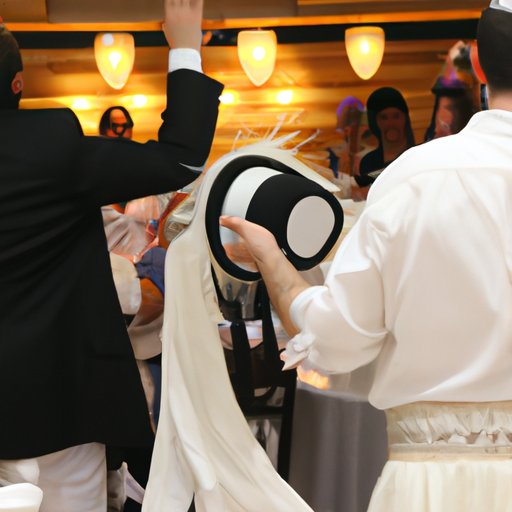Introduction
The Hora is a traditional Jewish folk dance that has been passed down from generation to generation for centuries. It is an integral part of Jewish culture and has become a symbol of joy and celebration. Despite its popularity, many people are unfamiliar with the history and significance of the Hora.

A Historical Overview of the Hora Jewish Dance
The origins of the Hora can be traced back to ancient times, when it was used to celebrate special occasions such as weddings, bar mitzvahs, and other important events. Over time, the dance has evolved and adapted to different cultural influences. Today, the Hora is still performed in Jewish communities around the world, although the steps and movements have changed over time.
Traditional Hora music and dance consists of a lively tune played on instruments such as the clarinet, accordion, and violin. The dancers form a circle and join hands while they move in unison to the rhythm of the music. The steps of the dance include hopping, skipping, and turning, as well as clapping and singing. In some cases, the dancers may also incorporate props such as handkerchiefs or ribbons into the dance.
The Meaning and Significance of the Hora in Jewish Culture
The Hora has both religious and cultural significance for the Jewish community. On a religious level, the Hora is seen as a way to honor and celebrate God. It is believed that dancing the Hora brings joy and happiness to the participants, which is seen as a way of thanking God for his blessings. On a cultural level, the Hora is a symbol of unity and shared identity among Jews. It is an expression of joy and solidarity that transcends language, ethnicity, and geographic boundaries.

Exploring the Steps and Movements of the Hora
The basic steps of the Hora involve moving in a circular pattern, either clockwise or counterclockwise. The dancers join hands and sway their arms to the beat of the music. They then move forward and backward, turn, and hop in place. Different variations of the Hora include changing direction, adding jumps or spins, and incorporating props such as handkerchiefs or ribbons.
How to Teach Yourself to Dance the Hora
Learning the Hora is not difficult, but it does require practice and patience. Begin by finding a traditional Hora song and listening to it repeatedly. Next, watch videos of people performing the Hora and try to imitate their steps. Practice each step slowly and gradually increase your speed as you become more familiar with the movements. Finally, incorporate props into your dance if desired.
The Impact of the Hora on Modern Jewish Music and Dance
The Hora has had a major influence on modern Jewish music and dance. Its distinct style of music and choreography can be found in contemporary Israeli pop songs and modern interpretations of traditional Hora dances. The Hora has also been embraced by non-Jewish cultures, who have adopted aspects of the dance and incorporated them into their own celebrations.

The Role of the Hora at Jewish Weddings and Celebrations
The Hora is an essential part of Jewish wedding and celebration ceremonies. During weddings, the bride and groom will often lead the Hora during the reception. At other celebrations, such as bar mitzvahs and bat mitzvahs, the Hora is typically performed after the meal. Other types of dances that may be performed during these celebrations include the freylekhs, kazatsky, and sher.
Conclusion
The Hora is an important part of Jewish culture and tradition. It has a rich history and deep religious and cultural significance. From its origins to its modern interpretations, the Hora is a beloved and vibrant expression of joy and celebration. Whether you’re looking to learn the steps or just appreciate its beauty, the Hora is sure to bring smiles and laughter to all who experience it.
(Note: Is this article not meeting your expectations? Do you have knowledge or insights to share? Unlock new opportunities and expand your reach by joining our authors team. Click Registration to join us and share your expertise with our readers.)
